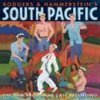SITE GUIDE
SEARCH
REVIEWS
REVIEW ARCHIVES
ADVERTISING AT CURTAINUP
FEATURES
NEWS
Etcetera and
Short Term Listings
LISTINGS
Broadway
Off-Broadway
NYC Restaurants
BOOKS and CDs
OTHER PLACES
Berkshires
London
California
New Jersey
DC
Connecticut
Philadelphia
Elsewhere
QUOTES
TKTS
PLAYWRIGHTS' ALBUMS
LETTERS TO EDITOR
FILM
LINKS
MISCELLANEOUS
Free Updates
Masthead
A CurtainUp Philadelphia Review
Becky Shaw
|
Fuck you, mom. Call me?
.— Suzanna on her mother's voicemail
|

Brooke Bloom as Becky Shaw and Jeremy Bobb as Max
(Photo: Jim Roese) |
My money was on Becky Shaw. I anticipated delicious Machiavellian characters plotting and straining to advance themselves socially. I had the wrong idea — the play is not about wicked. And despite the reference to Vanity Fair's Becky Sharp in the title, it's not about social climbing either. [See our review of the NY premiere which includes accompanying editor's commentary and a comparison to Thackeray's novel.]
Suzanna (Danielle Skraastad) asks her husband, Andrew (Armando Riesco) to invite a co-worker Becky (Brooke Bloom) on a blind date with Suzanna's sort-of stepbrother, Max (Jeremy Bobb). Becky's appearance on the scene upsets the equilibrium, and the dramatic second act is about the repercussions. Not a true Machiavellian, but aggressive and persistent, Becky insinuates herself into the group, desperately seeking a relationship.
Playwright Gionfriddo has a prodigious gift for constructing dialogue, skipping the niceties and moving things along. In the second act her robust, vital drama rivets the audience. The kick is in the architecture of the encounters, as hyperarticulate characters challenge, analyze, and clash. The whole situation may be murky, but words rush with particular clarity, like shining drops of rain from a roiling cloud. Relationships are tipped on the edge of imploding, exposure. . .or starting up.
Gionfriddo takes the four young people and mix 'n matches, allowing a glimpse of possible pairings. How would they size up as couples? Suzanna and Max, the central interests of the play, were raised as siblings and their pairing works well for smarts and temperament. Suzanna, a Schulz's Lucy van Pelt with a case of Mamet-mouth, is married to Andrew, a different-drummer guy. They appear to be seeking the submerged better angels of their natures. Andrew and Becky go together with a kind of cluelessness and as enabler/ enablee. Becky and Max are a match in aggression and lack of concern for others' feelings. The trajectory is unclear. It would be hard to predict what would happen to these creatures of the spoken moment if there were another act.
Anne Kauffman guest directs the production. Besides the title's reference to Vanity Fair, she sees tie-ins to screwball comedies like His Girl Friday (Hawks 1940). Both His Girl Friday and Becky Shaw at heart are less about socio-economic differences than about relationships. However, while the movie and play both have smart-alecky dialogue, this is not old time badinage. It's far too direct, influenced more by Mamet than by the allusions of screwball comedy. Fuck innuendo.
The director also cites the influence of The Philadelphia Story (Cukor 1940) on her approach to the material, and here we are on even shakier ground. The play's once wealthy people aren't social Brahmins, and poormouse Becky attended Brown — even if she was on scholarship and didn't stay, there's nothing like the Ivy League as a social leveler. Max, the successful, blunt fellow who asserts that his blind date is not his equal, wasn't himself to the manner born, but was adopted by Suzanna's once-rich father. The mother, Susan (Janis Dardaris), whose juicy part is written in little epithet packages, dispenses advice although she doesn't really give a damn about much beyond her jailed boyfriend. Far from bristling at the idea of an interloper in her class, she couldn't care less about Becky's status or bank balance. The Philadelphia Story connection muddies the water.
According to press notes, Ms. Kauffman is interested in "riding the language." It works. Her intelligent, supportive direction is more successful than the referents she found in the movies. Its success is reflected in the way the actors/characters handle incidental and crucial moments together and relate within the space. Rather than working from stage directions, notes on busy-making practicalities, or general feelings about the subject matter, when the director proceeds from the language, the words to reveal the meaning and things fall into place from there. The intensity of this approach, along with the work of extremely skilled actors and the unusual set, keeps the show from becoming a staged version of TV-like talking heads. Yet the writing, direction, and acting owe much to harder-edge television. The resemblance is not a bad thing in that the combination of writing and directorial approach makes the live performance move in a current, nuanced, more effective way than some older stage techniques would.
It may seem unlikely that set design would be all that important in this type of dark comedy, where a set can be almost superfluous. But this set relates to the director's concept and it is a star of the show. Ms. Kauffman conceived the kernel of the idea in remembering a diorama of miniature period rooms in a museum. The idea of people looking into rooms as things transpire, rather than viewing events on a normal stage, was shared with set designer Mimi Lien.
Anyone with an appreciation of its mechanical requirements will marvel at Ms. Lien's scenic design and the splendid execution of a very bright idea. In a feat of design and stage engineering, a large revolving box rolls on hidden wheels. It is bisected by an arterial hallway with a box —-or room— on each side. One room shows at a time. This allows for the sense of looking inside rooms rather than at a typical, generalized performance space. The set does not revolve 360', but rather is rotated back and forth 180' between scenes.
The boxes become several impeccably turned out rooms; however, the last one misses its mark. When it came into view, my first impression was that this was the lobby of a modest retirement home with middle class aspirations. Whoops, that's wrong. It is intended to show the faded glory of gentry, or at least rich people, fallen on harder times. This might call for very good furniture gone ratty and solidly shabby chic. Many old homes out on the Main Line could serve as primers for this décor. But this is a quibble. All the other interiors are beautifully and meticulously realized.
Impossibly, when a room is shown, it is framed by bands of white light. It floats. Its interior is flooded with even light, in addition to the glowing table lamps and built-in lights within the space. Lighting designer Thom Weaver was faced with a challenge in that the moveable structure is roofed, so the very many stage lights could not be located above the stage. All are aimed at the stage from out in the house. Oh, and labels for the scenes are projected on the structure as it turns. Simple, eh?
All in all, this is an exceptional production of a bleakly funny, witty, and entertaining work. Various topics are aired, and there are intimations of some characters' nascent self-awareness, but if there's a consistent theme of class, social climbing, or anything of that nature in Becky Shaw, let's say it's elusive. By the end, a couple of problems have found fragile, tenuous solutions, while other outcomes are open to interpretation. There is little sense of what it all adds up to in the long haul. This is a comedy and it priveleges the thrill of spoken engagement over the heft of issues. My advice: When you go see it, embrace the evanescence of the verbal interplay. Notice the freight, but don't worry too much about the destination. Enjoy the fun of being fully engaged in the ride.
Side Note: Although theater management folks regularly remind audiences to turn off things that make noise, they don't always mention quiet things that light up. This wasn't the first time that someone seated nearby texted and looked at pictures during a performance (this time literally throughout the first act), illuminating the surrounding area in a distracting way. Evidently not everyone has a sense of personal electronics etiquette, and it looks like it's time to ask people not to conduct business, tweet, photograph, view pictures, text, and respond to email during performances.
|
Becky Shaw
by Gina Gionfriddo Directed by Anne Kauffman Cast: Brooke Bloom, Jeremy Bobb, Janis Dardaris, Armando Riesco, Danielle Skraastad Set Design: Mimi Lien Costume Design: Emily Rebholz Lighting Design: Thom Weaver Sound Design: Christopher Colucci Dec 30- extended to Feb 7. Opening Jan 6 2 hours and 15 minutes includes one 15 min intermission. Reviewed by Kathryn Osenlund based on 01/07 performance. At the Wilma Theater |
|
REVIEW FEEDBACK Highlight one of the responses below and click "copy" or"CTRL+C"
Paste the highlighted text into the subject line (CTRL+ V): Feel free to add detailed comments in the body of the email. . .also the names and emails of any friends to whom you'd like us to forward a copy of this review. You can also contact us at Curtainup at Facebook , Curtainup at Twitter and at our Blog Annex |
|
Subscribe to our FREE email updates with a note from editor Elyse Sommer about additions to the website -- with main page hot links to the latest features posted at our numerous locations. To subscribe,
E-mail: esommer@curtainup.comesommer@curtainup.com
put SUBSCRIBE CURTAINUP EMAIL UPDATE in the subject line and your full name and email address in the body of the message -- if you can spare a minute, tell us how you came to CurtainUp and from what part of the country. |





